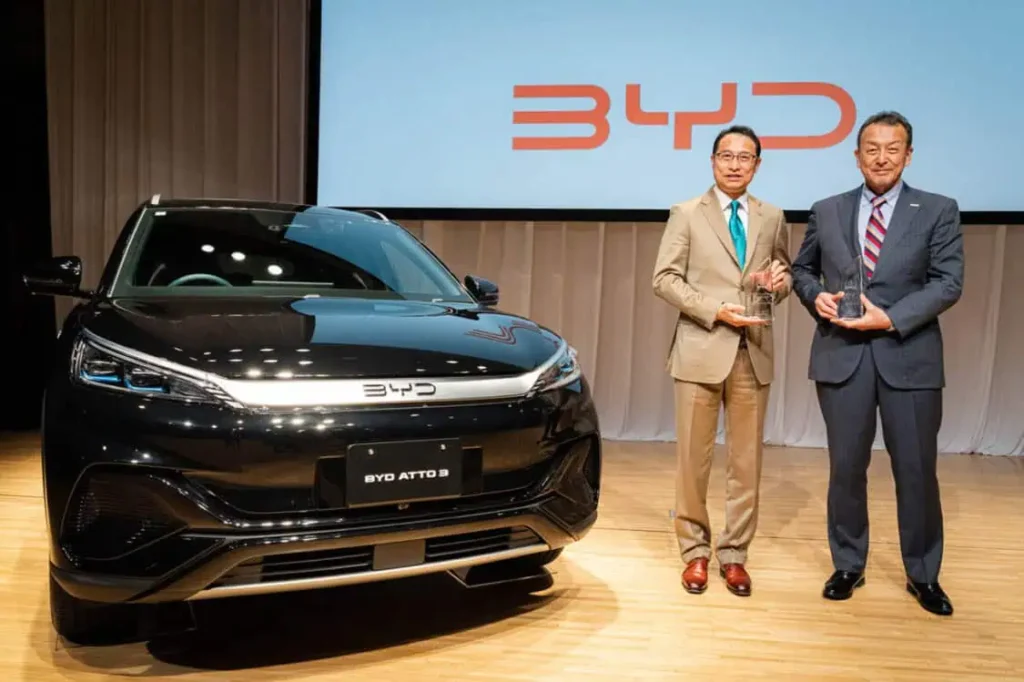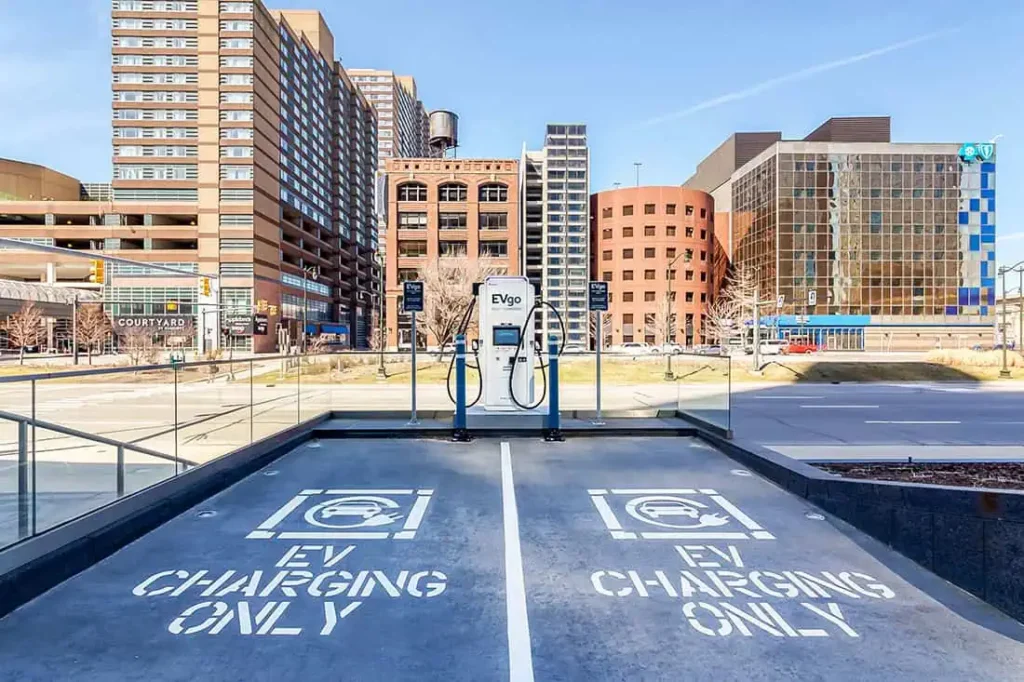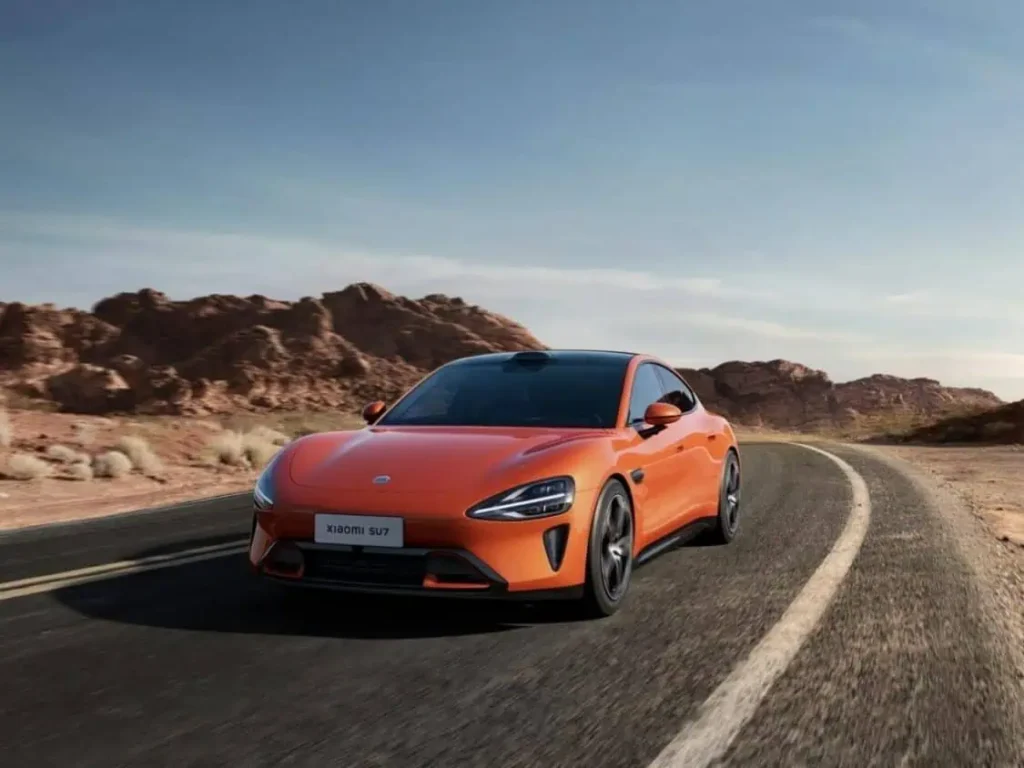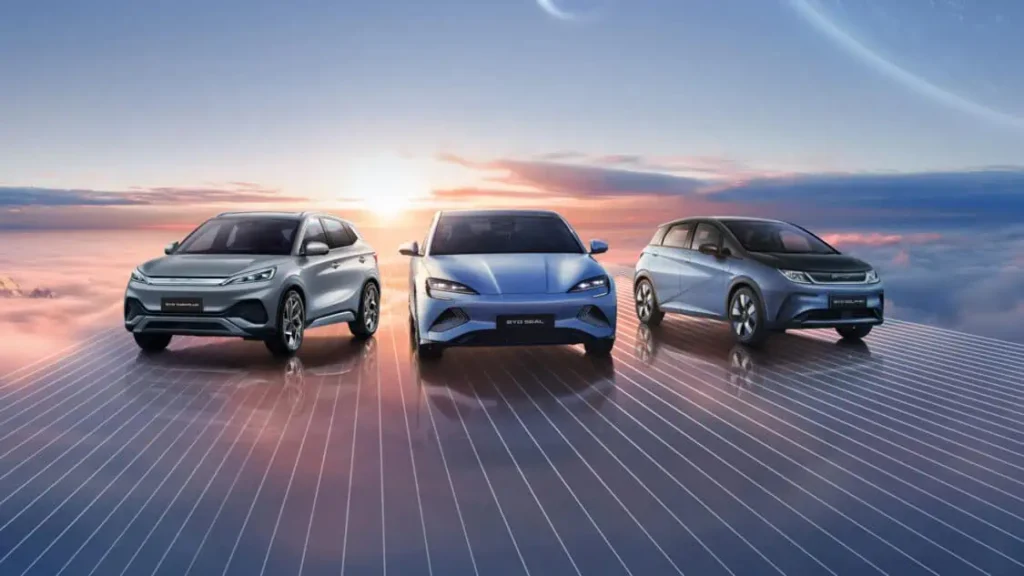Can America Catch Up to China’s EV Dominance?
While America slept, China became the global electric vehicle (EV) industry leader.
China’s rapid rise in the electric vehicle (EV) market exemplifies its “China Speed” approach to industrial transformation. Over the past 15 years, China has developed a vast public charging network, with over 10 million stations, and incentivized EV adoption through subsidies and regulatory benefits, pushing over a hundred EV brands into the market. This strategy has propelled China to the forefront of global EV leadership, with over half of its automotive sales in July and August 2024 being electric or hybrid vehicles.
Because electric vehicles will soon dominate the global automotive market, this means China will likely dominate that market as well. Global sales of internal combustion engine (ICE) vehicles have experienced a consistent decline since 2017, primarily due to the increasing market share of electric vehicles (EVs). Colin McKerracher, head of transport and automotive analysis at BloombergNEF, notes that the world has now reached “peak” gas-powered vehicle sales. Since that peak in 2017, sales of ICE vehicles have plummeted by 23%.
The U.S. is working to close the EV gap with China. The Biden administration has made EV adoption a national priority, setting a goal for half of all vehicles sold by 2030 to be electric, plug-in hybrid, or fuel cell-powered. However, the U.S. lags behind in terms of market penetration and infrastructure. To protect domestic automakers and slow Chinese dominance, the White House has implemented tariffs on Chinese-made EVs. Despite these efforts, China’s scale and speed of transformation make it a dominant player in the global EV market for the foreseeable future.
Bill Russo, automotive industry expert and Founder, Chairman and Board Director of Shanghai, China-based Automobility Ltd., said: “The rest of the world plays EV checkers while China plays Smart EV chess. The US EV effort looks like this year’s Chicago White Sox compared with China’s New York Yankees. They are not in the same league, and tariff protections never yield competitive advantage.”
See Russo’s LinkedIn article, “The Path to Globalization of China’s Automotive Industry [2024 Edition]” for what is happening on the front lines of disruption.

The U.S. faces several hurdles in meeting its ambitious EV adoption goals, including supply chain limitations, lagging EV infrastructure, and consumer loyalty to gas-powered vehicles. John Bozzella, CEO of the Alliance for Automotive Innovation, has noted that the Biden administration’s targets are on the “ragged edge of achievable.” This skepticism is rooted in the U.S.’s relatively slow transition compared to China, where EV adoption and infrastructure have grown at an exponential rate.
EV Charging Growing Fast in US
While the Biden-Harris administration has made progress by doubling the number of DCFC and Level 2 public chargers to 193,355 as of September 24 2024, the pace remains slow compared to China’s aggressive rollout. The U.S. is adding about 1,000 new chargers weekly, with a goal to reach 500,000 by 2030. Still, with significant infrastructure gaps and slower cultural shifts toward EVs, meeting these goals remains uncertain, despite the government’s efforts to accelerate the transition.

The Biden administration has allocated $7.5 billion to accelerate the expansion of electric vehicle (EV) charging infrastructure, with $5 billion earmarked for building fast-charging networks along U.S. highways through the National Electric Vehicle Infrastructure Formula program (NEVI). Progress has been made at a steady pace. However, progress has been called slow by critics. The long length of time required in the buildout contributes to “range anxiety,” a key barrier to wider EV adoption, as drivers worry about the availability of charging stations on longer trips.
Loren McDonald, CEO of EVAdoption, provided context about the perceived sluggish speed of NEVI rollouts. Considering all of the stakeholders involved, and the complexity of the process, it makes sense that the installations are not done quickly.
“People need to understand that the NEVI program is an entirely new procurement process for states, and the state DOTs have to get public feedback regarding the site locations, develop the RFP and application process and scoring system, which can take 6 to 9 months or more, and then allow a few months each for the application submissions and then to scoring and award process.”
“Then, once companies are awarded sites, it takes a few months to work through contractual agreements, the environmental review process and then as much as 12-18 months for the charging companies to build and open the stations,” McDonald continued.
The Joint Office of Energy and Transportation reported that as of May 2024, “We’re more than a third of the way to reaching the Biden Administration goal of 500,000 public ports available by 2030,” it said in its Q2 2024 NEVI Quarterly Update. The update said “Now, there are eight stations in six states with 33 public charging ports in operation supported by NEVI funding.”
EVs and Plug-in Hybrids Made up Less Than 10% of U.S. Car Sales as of June 2024
Despite government efforts, EVs and plug-in hybrids made up less than 10% of U.S. car sales as of June 2024. The slow pace of infrastructure development in comparison to China is a major factor in the gap between the administration’s goals and actual adoption rates, underscoring the challenges the U.S. faces in scaling EV adoption to meet its 2030 targets.
It’s important to note that EV sales have continued to grow in the US, however sales growth has happened more slowly in 2024 than the peaks of recent years. In Kelley Blue Book’s Electric Vehicle Sales Report — Q2 2024, sales figures are broken out by brand and model. Every product has peaks and valleys of sales growth, so this trend is completely normal and not a cause for concern. EV sales continue to rise, but many headlines falsely stating otherwise would leave you thinking they haven’t.
“China has a head-start in a race that is still at the starting line,” said Baratunde Cola, CEO and founder of Carbice, a maker of so-called nanotubes whose products help keep electric cars from overheating. “Everybody’s still setting up race blocks.”

How China Dominated the Global EV Market
China’s dominance in the electric vehicle (EV) market is the result of a long-term strategic approach that began over a decade ago. Recognizing the potential of EVs as a transformative innovation in transportation, akin to Henry Ford’s impact on the auto industry in the 20th century, China employed a centrally coordinated industrial policy similar to what propelled Japan’s auto sector in the 1970s and ’80s.
In 2009, the Chinese government initiated the “Ten Cities and Thousand Vehicles” pilot subsidy program, aimed at promoting EV and hybrid adoption in public transportation, such as buses and taxis. This was a foundational step in building out China’s EV infrastructure.
By 2013, China expanded subsidies to individual consumers, with a tiered system incentivizing vehicles based on their range. Although the government discontinued these subsidies in 2022, China’s EV sector had gained enough momentum to maintain its growth trajectory. Additionally, China introduced a 10% sales tax exemption on EVs, which helped further reduce costs for consumers. While this exemption is scheduled to phase out by 2027, China’s early and sustained investments have firmly positioned the country as a global leader in the EV market.
From 2009 to 2023, the Chinese government provided an impressive $231 billion in subsidies to accelerate the adoption of electric vehicles (EVs), according to the Center for Strategic and International Studies. This “carrot” approach, which offered financial incentives to both consumers and manufacturers, proved remarkably effective in boosting EV consumption. As a result, new electric car registrations in China surged to 8.1 million in 2023—a 35% increase compared to 2022, according to the International Energy Agency.
In addition to subsidies, China has focused heavily on building the necessary infrastructure to support its growing EV fleet. By June 2024, the country had installed 10.2 million EV chargers, representing a 54% increase from the previous year, according to the National Energy Administration.

China has surpassed the U.S. in EV infrastructure not only through sheer numbers but also through a more efficient and user-friendly system. According to Lei Xing, a Chinese auto industry expert, a key advantage is China’s use of a single standardized plug for all electric vehicles, eliminating the confusion around plug types and adapters that exists in the U.S. This streamlined system simplifies charging for drivers and increases accessibility.
Another significant edge is China’s control over critical raw materials essential for EV and battery production. The International Energy Agency estimates that by 2030, China will supply 90% of the world’s graphite and 77% of refined rare earth elements, which are crucial for EVs. The U.S., in contrast, imports 100% of its graphite, with about one-third of it coming from China, according to the Alliance for Automotive Innovation.
China’s proximity to semiconductor chip manufacturing further solidifies its dominance in the EV space. Taiwan, which produces about 90% of the world’s most advanced chips, gives China a strategic advantage in sourcing these vital components for EV production. Hooman Shahidi, CEO of EVPassport, highlighted how this close access strengthens China’s position. While the U.S. and Canada are working to reduce their reliance on Chinese materials and technology, Xing notes that achieving this independence could take at least a decade.
Can the U.S. Catch Up?
U.S. drivers have been slower to embrace electric vehicles (EVs), with Shahidi noting that the market is characterized by many “laggards” rather than early adopters. Despite this slower uptake, experts argue that it’s premature to dismiss the U.S. as a contender in the EV space. The country possesses the financial resources and technical expertise necessary to enhance its electric transportation systems, although it often lacks the political will to push these initiatives forward.
The next few years are considered crucial for domestic EV development, according to Bozzella from the Alliance for Automotive Innovation. In March 2024, the Biden administration revised its goal for EV sales to represent half of the market by 2030, a move that Bozzella believes will provide the industry and supply chains with the breathing room needed to catch up and potentially surpass China.
Shahidi highlighted that the U.S. has set a strong pace with incentives aimed at achieving these targets. However, he emphasized the need for greater support for companies focusing on supply chain and logistics improvements, a strategy that has proven effective for China. By strengthening these areas, the U.S. could enhance its competitiveness and accelerate the transition to electric vehicles.
“We need to incentivize and reward the ancillary economy tied to electrification,” Shahidi said.
Key Areas For Improvement Include Investment in Robotics and Automation, Advancements in Materials, and Critical Mineral Production
To enhance its competitive edge in the electric vehicle (EV) sector, Cola, the head of Carbice, emphasizes the need for the U.S. to focus on several key areas: Investment in robotics and automation, advancements in materials, and critical mineral production.
Increasing investment in robotics and automated assembly processes can streamline production and improve efficiency in EV manufacturing. Automation can help reduce costs and increase output, making U.S. manufacturers more competitive.
Investing in advanced materials can lead to the development of lighter, more efficient vehicles. This can improve range and performance, providing an advantage in the increasingly competitive EV market.
Strengthening the domestic production of critical minerals is essential for reducing reliance on China. Ensuring a stable supply of materials such as lithium, cobalt, and nickel, which are vital for battery production, will enhance the U.S. supply chain resilience.
The use of cobalt and nickel in EV batteries has been controversial, and has declined as companies shift from nickel and cobalt based (NCA/NMC) batteries to lithium iron phosphate (LFP) batteries. Because they avoid cobalt and nickel, LFP batteries can be produced, on average, with 15-25% lower carbon emissions than NMCs. They also avoid some of the humanitarian criticisms about NMC battery manufacturing.
Federal and Local Initiatives Addressing Gaps
As the U.S. accelerates its transition to electric vehicles, federal and local initiatives are actively addressing gaps in the clean energy workforce. The Federal Highway Administration (FHWA) reports that there are currently more than 24,100 EV chargers in various stages of federally-funded projects, with plans for significant expansion.
A spokesperson for the FHWA stated, “We expect to see hundreds of federally-funded chargers operational this year, thousands next year, and hundreds of thousands of chargers by the end of the decade.” This ambitious rollout of charging infrastructure is essential for alleviating range anxiety among potential EV buyers and supporting the growing number of electric vehicles on the road.
These efforts align with broader federal goals to enhance EV adoption and develop a sustainable clean energy workforce, ensuring that the U.S. can compete effectively in the global EV market while creating new job opportunities in the clean energy sector.

Electric Vehicle Marketing Consultant, Writer and Editor. Publisher EVinfo.net.
Services